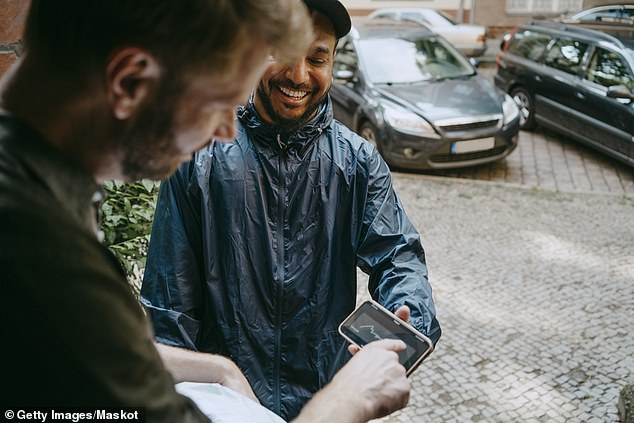Fight to save signatures from extinction as teachers warn millions of children will no longer be able to sign their names
The art of the traditional signature is a thing of the past thanks to the rise of online contracts, electronic signatures and PIN codes.
Surveys show that only a fifth of young adults between the ages of 18 and 24 have a personal signature, and a similar proportion of adults use their signature so little that they cannot consistently produce the same one.
And that matches what teachers see.
Dr. Lori Koerner, the assistant superintendent of the Riverhead Central School District in New York, told DailyMail.com, “I have encountered too many high school students and job applicants who cannot sign documents regarding their onboarding process.”
While no longer having a signature can be akin to losing your individuality, experts told DailyMail.com there’s a scarier reality: It could make them more susceptible to identity theft.
Students are no longer taught cursive at school, which means that the individual signature is dying out
“While technology has its benefits, children need to be able to read cursive when a document is presented to them on the go,” says Dr. Koerner.
“They definitely need to know how to write their names.”
Signatures were once a symbol of a person’s identity, with sharp lines used to distinguish each individual from the next.
It was one of the first things children learned in school as they practiced writing their names in cursive every day in preparation for signing important documents later in life.
However, the US government removed the skill from the core curriculum in 2010, claiming it was time-consuming and would not be useful in the age of technology, meaning schools could focus on typing lessons instead.
When dropping cursive from the Common Core, lawmakers argued that cursive was time-consuming and would not be as useful as other skills such as typing, which students would need as they entered grade school and high school,” said a then-Georgia Department spokesperson. of Education told ABC News at the time.
In today’s world, a signature can be any sign on paper that indicates the parties accept the terms of an agreement, including a photograph, a series of squiggles, a traditional “X,” a printed name, or a signature created by third-party software .
Natalie Maniscalco, co-founder of Wonder Girls USA, told DailyMail.com: ‘Often everything is digitized and we are often asked for a signature on an iPad, which obviously diminishes any type of original signature because it never gets in the way . with paper and pen it would look like this.’
Digital signatures became widespread in the early 2000s after then-President Bill Clinton signed the Electronic Signatures in Global and National Commerce (ESIGN) Act into law.
The law made electronic signatures legally binding in the US, giving them the same status as paper contracts such as leases, credit card receipts and mortgage contracts.

Technology has replaced the need to use a proper signature, allowing you to add a squiggle on a digitized device instead
A video on a teacher’s Facebook forum discussed the issue, saying young people should be able to write their names in cursive or risk more sinister consequences.
‘I feel like the kids are losing connection. We can’t say they don’t need technology because that’s the time we live in. But you’re all going to teach them how to use computers. Can we teach them cursive?’ said someone in the coil.
‘Because they print their name and someone could steal their identity. I mean, they don’t have a signature; nothing unique to them.”
This is because the less complex the handwriting, the easier it is for a criminal to forge your signature and steal money from your bank account and obtain credit cards, loans and government benefits.
It can also allow criminals to create fake contracts and agreements in your name, take over existing accounts and obtain legal documents such as passports and driver’s licenses.
Maniscalco wondered whether the younger generation’s inability to sign off will impact their lives and careers, explaining: “It’s hard to say right now.
“But it is important for (young people) to create (a signature) that is authentic to them and for them to understand what the signature can be used for, just like all the other life skills children need to be taught.”
